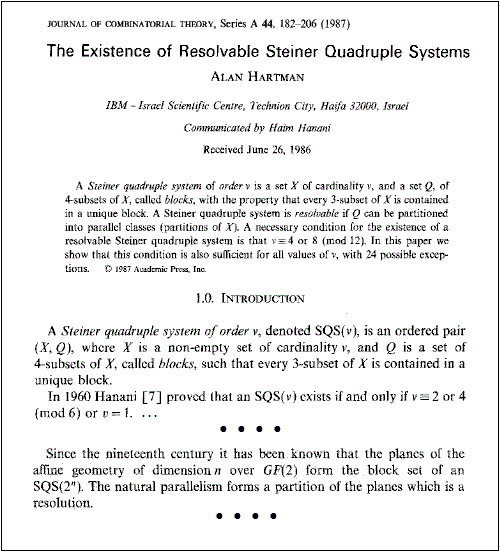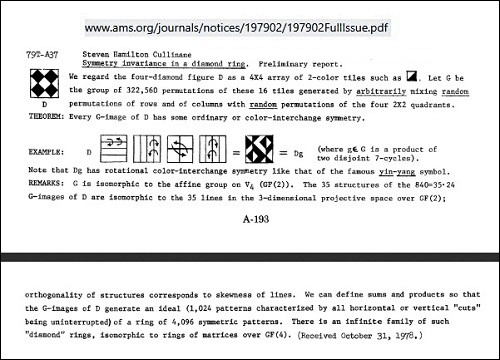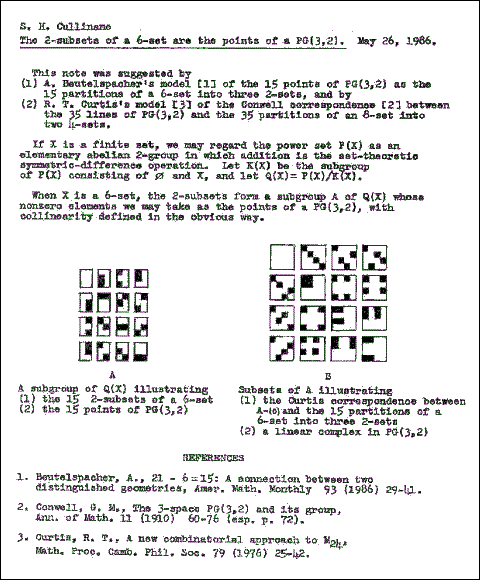|
From some 1949 remarks of Weyl— "The relativity problem is one of central significance throughout geometry and algebra and has been recognized as such by the mathematicians at an early time." — Hermann Weyl, "Relativity Theory as a Stimulus in Mathematical Research," Proceedings of the American Philosophical Society , Vol. 93, No. 7, Theory of Relativity in Contemporary Science: Papers Read at the Celebration of the Seventieth Birthday of Professor Albert Einstein in Princeton, March 19, 1949 (Dec. 30, 1949), pp. 535-541 Weyl in 1946—: "This is the relativity problem: to fix objectively a class of equivalent coordinatizations and to ascertain the group of transformations S mediating between them." — Hermann Weyl, The Classical Groups , Princeton University Press, 1946, p. 16 |
For some context, see Relativity Problem in this journal.
In the case of PG(3,2), there is a choice of geometric models
to be coordinatized: two such models are the traditional
tetrahedral model long promoted by Burkard Polster, and
the square model of Steven H. Cullinane.
The above Wikipedia section tacitly (and unfairly) assumes that
the model being coordinatized is the tetrahedral model. For
coordinatization of the square model, see (for instance) the webpage
Finite Relativity.
For comparison of the two models, see a figure posted here on
May 21, 2014 —
Labeling the Tetrahedral Model (Click to enlarge) —
"Citation needed" —
The anonymous characters who often update the PG(3,2) Wikipedia article
probably would not consider my post of 2014, titled "The Tetrahedral
Model of PG(3,2)," a "reliable source."



















